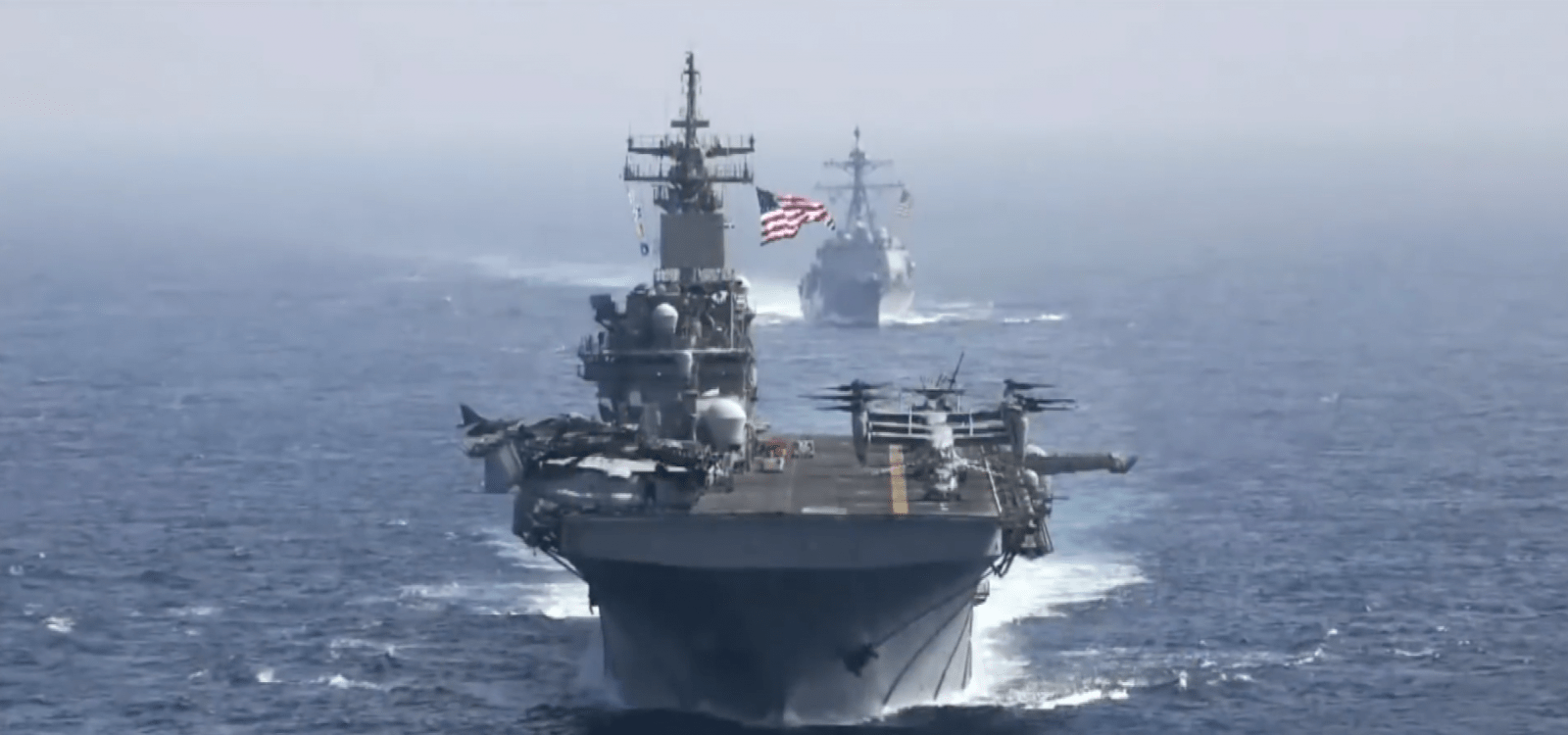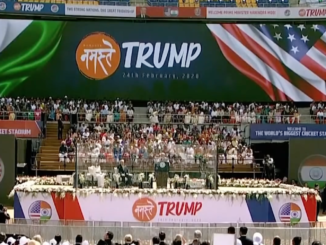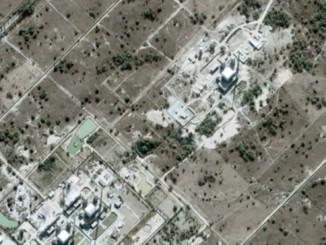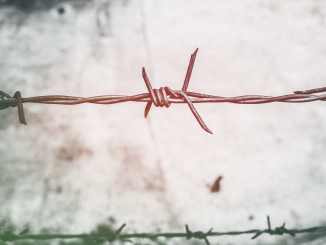 Relations between the U.S. and Iran have quickly gone downhill since the United States withdrew from the Iran Nuclear Deal (JCPOA) on 8th May, 2018. Last month, President Donald Trump designated the key branch of Iran’s military forces, the Islamic Revolutionary Guards Corps, as a terrorist organization. The two countries seem to be moving closer to conflict with each passing day. The USS Abraham Lincoln aircraft carrier strike group has been ordered to move to the Middle East. The U.S. also has deployed the nuclear capable B-52H bomber in Qatar. The senior Iranian Revolutionary Guard commander said that the United States’ military presence in the Gulf was a ‘target’ and ‘opportunity’ raising the rhetoric another notch. The risk of a full scale war is aggravated since there is no diplomatic channel between the two which can be used to diffuse an accidental flare up.
Relations between the U.S. and Iran have quickly gone downhill since the United States withdrew from the Iran Nuclear Deal (JCPOA) on 8th May, 2018. Last month, President Donald Trump designated the key branch of Iran’s military forces, the Islamic Revolutionary Guards Corps, as a terrorist organization. The two countries seem to be moving closer to conflict with each passing day. The USS Abraham Lincoln aircraft carrier strike group has been ordered to move to the Middle East. The U.S. also has deployed the nuclear capable B-52H bomber in Qatar. The senior Iranian Revolutionary Guard commander said that the United States’ military presence in the Gulf was a ‘target’ and ‘opportunity’ raising the rhetoric another notch. The risk of a full scale war is aggravated since there is no diplomatic channel between the two which can be used to diffuse an accidental flare up.
The Iranian Navy has about 400 vessels. Though this number is considerable, the quality leaves a lot to be desired. Their Navy is considered a brown water navy and operates mainly within the 50km exclusive zone. A large percentage of the fleet is made up of small patrol vessels, apart from which there is a small Submarines forces, some frigates and a few Corvettes. The most potent submarine in the fleet is the Russian Diesel-electric Kilo class which displaces around 2,325 tons; Iran has three of these. The other submarines are much smaller and none of them are nuclear powered. This submarine force is nowhere close to what the U.S. brings to the table. It has 17 Virginia class, 32 Los Angeles class submarine, 3 Sea Seawolf class attack subs in active service, apart from 18 Ohio class Ballistic missile Submarines. All of these are nuclear powered with a displacement upwards of 6,000 tons, and are technologically far superior.
Iran neither has a destroyer nor an aircraft carrier. There are 6 frigates and 3 Corvettes. The most powerful of these is the Sahand class that displaces around 2,000 tons. However, they are no match for the advanced U.S. surface combatants. America has 66 Arleigh Burke class destroyers and 22 Ticonderoga class cruisers in active service. These displace more than 8,000 tons and are multi role warships capable of Anti Aircraft warfare (AAW), Anti submarine warfare (ASW), Anti Surface Warfare (ASuW) and Ballistic Missile Defence BMD. The U.S. Navy is expected to dominate any potential conflict and may be able to impose a naval blockade.
On paper, the Iranian Air force possesses more than 300 combat capable aircraft, but all of them are either 3rd generation or 4th generation. There are around 190 fighter aircrafts such as the U.S. made Northrop F-5s, F-4 Phantom II, Grumman F-14 and the Russia made Sukhoi Su-22, Sukhoi Su-24 and MiG-29; of these, the MiG-29 is the most modern fighter and Iran operates approximately only 25 of these. The air to air missiles equipping fighters are outdated in technology compared to what the U.S. possesses. The F22 and F35 are a generation ahead of MiG-29 and are stealthy. In this scenario, the Iranian pilots will find it very difficult to detect and target them. The U.S., with more sophisticated fighters coupled with far better pilot training and aerial strategy, is expected to quickly get air superiority over Iranian skies.
Iran has 525,000 active personnel and around 350,000 in reserves. Iran’s military reportedly has 1,600 tanks. This includes some 100 basically produced Zulfiqar, about 100 very old British made Chieftain, around 200 U.S. made M-60 Patton, as well as around 1,000 T-72 tanks of different variants. Technically, the T-72 is the best of the lot. It could be noted that in the 1991 Gulf war and during the 2003 invasion of Iraq, the T-72s were quickly swept aside by American M1 Abrams and the British Challenger II. Tehran also is thought to possess around 2,300 armoured fighting vehicles, around 550 self-propelled artillery, around 2,150 towed artillery pieces and approximately 2,000 rocket projectors. While the equipment is available in decent numbers, almost all of these are technically far less competent when compared to American counterparts. A ground invasion will be bloody but American forces will be able to make quick inroads.
Iran has approximately 1,000 strategic missiles that are controlled by the Revolutionary Guards. It consists of 300 km short range ballistic missiles, including the Iranian made Shahab-1 (Scud B), Shahab-2 (Scud C), as well as the Tonder-69 (CSS-8). It also has Shahab-3 strategic intermediate range ballistic missiles (IRBM) with a reported range of up to 1,000 km, the Ghadr-1 with an estimated range of 1,600 km, and Shahab-3 variants known as Sajjil-2 with a reported range of up to 2,400 km. These cannot reach the American mainland but these do represent a significant threat for regional American allies like Israel. But the reliability of these missiles is suspect; none have nuclear warheads and all of them are land based, which makes them inherently vulnerable to a pre-emptive strike. A diverse range of surface to air missiles are deployed to protect these sites but none have the capability to detect, track and engage American stealthy aircraft like the B52 Spirit and F-22 Raptor. The U.S. is expected to quickly neutralize these sites with air and sea launched precision strikes.
The Iran nuclear deal, JCPOA, involved the UK, Russia, France, China, Germany, the U.S. and Iran. None of these stakeholders have favoured the unilateral withdrawal of the U.S. from the deal. Diplomatic negotiations are still under-way, but it can be estimated that in case the U.S. pursues any military action against Iran, there won’t be major push-back apart from diplomatic sabre-rattling. If one looks at it from Iran’s perspective, it is most likely that these stakeholders will be bystanders at the very best or even support the U.S. in the worst case. It has also been seen that NATO as a whole has been able to keep aside difference in the past, and there is no possibility of it actively opposing the U.S. In this situation, it can be said that Iran will not find any ally which will genuinely support it in the event a conflict occurs.
Furthermore, Iran may have to face aggressive maneuvers from Israel and Saudi Arabia. Iran and Israel have been long-time rivals and several incidents during the current Syrian civil war has strained their relations further. Iran and Saudi Arabia have no diplomatic relations since an attack on the Saudi Embassy in Tehran in January 2016. Bilateral relations between the countries have always been strained due to several issues, like differences in oil export policies. On 13th May, Saudi Arabia stated that two of its oil tankers were attacked while sailing towards the Persian Gulf. As reported, in one case an unknown object seemed to have torn a hole into the hull of the tanker. While Saudi Arabia didn’t directly accuse Iran, things could heat up quickly if sabotage by Iran is proven.
A war efforts require massive reserves, not only in men but also in material. The American annual military budget is around 50 times that of Iran. Napoleon is known to have said, “An army marches on its stomach.” In August last year, the Trump administration sanctioned Iran, which has adversely affected its economy. The sanctions have been expanded to include a ban on Iran’s oil exports which is its major source of foreign revenue inflow. More than 150 foreign corporations have stopped doing business with Iran; many countries like India and Japan have reduced oil imports from Iran and may eventually stop buying completely. The economic squeeze has resulted in a severe crunch. The Iranian rial lost more than 60% of its value against the dollar last year and inflation is predicted to reach 40% this year. The economy shrank by as much as 3.9% last year and as per the International Monetary Fund; it could nosedive by another 6% this year. Keeping this view, it will not be possible for Iran to fight a sustained war against the most well-funded military in the world.
The author is undergraduate student at the National Defense University, Islamabad




Be the first to comment